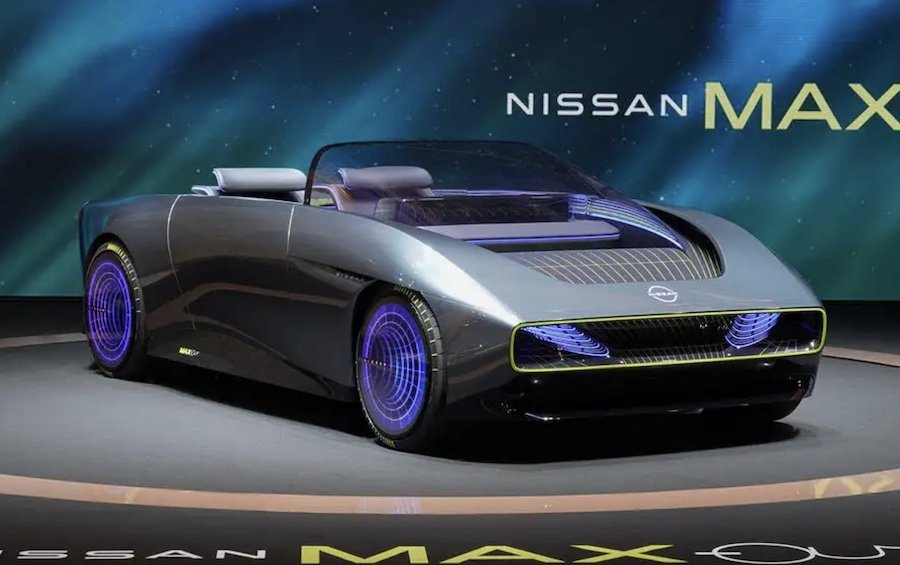Nissan has revealed an outlandish zero-emissions sports car concept, which, the firm says, represents its ambitions to develop sustainability and “innovative mobility”, and brings “zero-emissions mobility to the max”.
Previously seen in only digital form, the forward-thinking Nissan Max-Out concept takes the shape of a two-seat convertible.
The firm added today that the Max-Out has also been designed to “provide a liberating sense of openness while offering an enhanced, dynamic driving experience” and to deliver a “new driving experience with its superlative stability and comfort, tight handling and limited body roll”.
The two-seater features a unique set of wheels, along with a big open-air vent in place of a front grille. A large, circular light bar is positioned at the rear, with an inset 'Nissan' name written out.
Inside, a large digital display sweeps across the dashboard and can be used by both the passenger and driver. A non-traditional steering wheel and a lack of pedals indicate a degree of autonomous capability.
A video preview of the model’s unveiling shows that the screen can be used for digital gaming, viewing image galleries and recording lap times.
No powertrain details have been revealed, but should the Max-Out head into production, it would be likely to draw on solid-state battery technology, which will be used in the firm’s cars from 2028 onwards, as previously reported by Autocar.
That would mean it would be able to charge at triple the 130kW speed accepted by the Nissan Ariya SUV while offering improved performance and dynamics thanks to a smaller and lighter battery unit.
The Max-Out was initially previewed at the tail end of 2021 alongside two other Nissan EV concepts. It represents the sportier offering in the range, all of which feature the ‘-Out’ suffix.
The other Nissan EV concepts are the Chill-Out - a crossover that, in the future, is touted for production at Nissan’s Sunderland plant - the Surf-Out pick-up truck and the Hang-Out MPV.
All of Nissan’s ‘-Out’ concepts look ahead to Nissan’s broader future, including its advancement in battery technology, battery reuse, power management and vehicle intelligence.
The two-seater features a unique set of wheels, along with a big open-air vent in place of a front grille. A large, circular light bar is positioned at the rear, with an inset 'Nissan' name written out.
Inside, a large digital display sweeps across the dashboard and can be used by both the passenger and driver. A non-traditional steering wheel and a lack of pedals indicate a degree of autonomous capability.
A video preview of the model’s unveiling shows that the screen can be used for digital gaming, viewing image galleries and recording lap times.
No powertrain details have been revealed, but should the Max-Out head into production, it would be likely to draw on solid-state battery technology, which will be used in the firm’s cars from 2028 onwards, as previously reported by Autocar.
That would mean it would be able to charge at triple the 130kW speed accepted by the Nissan Ariya SUV while offering improved performance and dynamics thanks to a smaller and lighter battery unit.
The Max-Out was initially previewed at the tail end of 2021 alongside two other Nissan EV concepts. It represents the sportier offering in the range, all of which feature the ‘-Out’ suffix.
The other Nissan EV concepts are the Chill-Out - a crossover that, in the future, is touted for production at Nissan’s Sunderland plant - the Surf-Out pick-up truck and the Hang-Out MPV.
All of Nissan’s ‘-Out’ concepts look ahead to Nissan’s broader future, including its advancement in battery technology, battery reuse, power management and vehicle intelligence.
Related News



